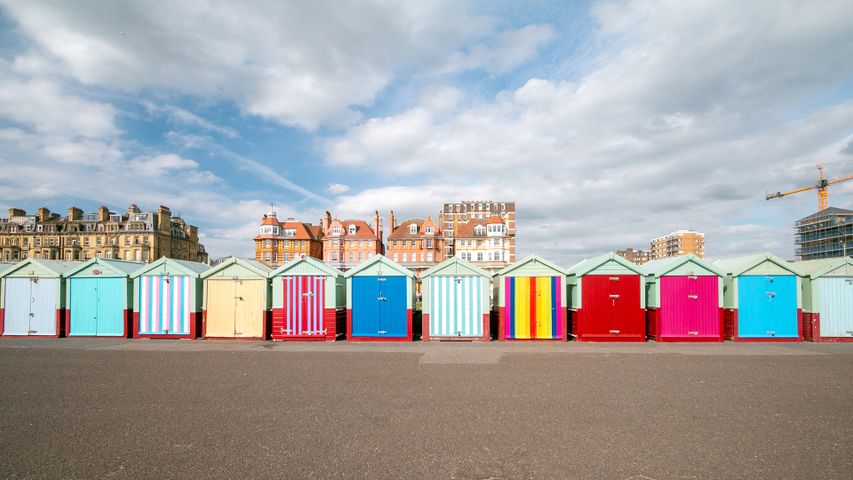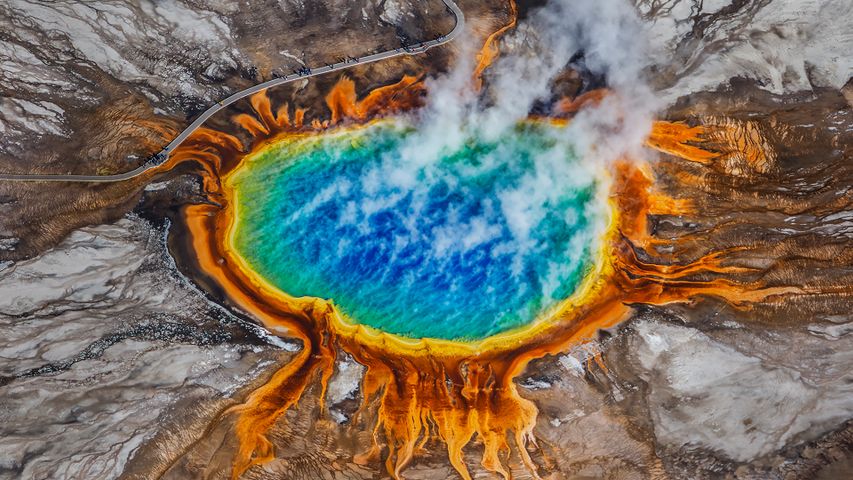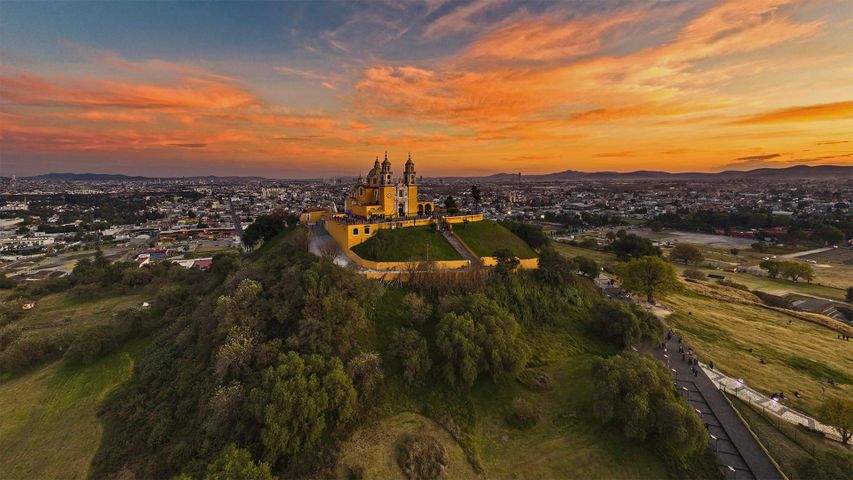Tree in blue agave field in the tequila producing region near Atotonilco, Jalisco, Mexico
© Brian Overcast/Alam
This blue succulent has spirit. Cinco de Mayo
Many celebrations of Cinco de Mayo, 5 May, owe a debt to these rolling fields of blue agave, or agave azul, used to make tequila. Blue agave is native to Jalisco, a coastal state of Mexico, where it grows head-high in the rich sandy soils of Jalisco’s highlands. Its flowers are pollinated, not by bees or birds, but by the Mexican long-nosed bat, whose favourite food is the pollen and nectar of agave.
Tequila is made by roasting the heart of the plant and then crushing or squeezing it to release a sugary, clear liquid called aguamiel, which means honey water. That liquid is distilled to produce tequila. Authentic tequila, by law, can be made only in Jalisco and a few municipalities outside it, and its authenticity is protected by trade agreements.
Cinco de Mayo is sometimes mistaken for Mexico’s Independence Day, which is actually on 16 September. In Mexico, the day commemorates the Mexican army’s victory over the French Empire in the Battle of Puebla in 1862. If you toast the table with a glass of tequila, take a moment to remember the azure fields where it all started.
Related Images
Bing Today Images



 Bottle cap mural by Oscar Olivares in Guatire, Venezuela
Bottle cap mural by Oscar Olivares in Guatire, Venezuela
 Mona Vale rockpool, Sydney, Australia
Mona Vale rockpool, Sydney, Australia
 'The Spirit of Electricity' by Raoul Dufy, Museum of Modern Art, Paris, France
'The Spirit of Electricity' by Raoul Dufy, Museum of Modern Art, Paris, France
 A delta in the Venetian Lagoon, Italy
A delta in the Venetian Lagoon, Italy
 Grand Prismatic Spring, Yellowstone National Park, Wyoming, United States
Grand Prismatic Spring, Yellowstone National Park, Wyoming, United States
 Desert bighorn sheep in Valley of Fire State Park, Nevada, United States
Desert bighorn sheep in Valley of Fire State Park, Nevada, United States
 Eucalyptus trees, Megalong Valley, Blue Mountains National Park, NSW, Australia
Eucalyptus trees, Megalong Valley, Blue Mountains National Park, NSW, Australia
 Sandstone hoodoos, Bryce Canyon National Park, Utah, United States
Sandstone hoodoos, Bryce Canyon National Park, Utah, United States



